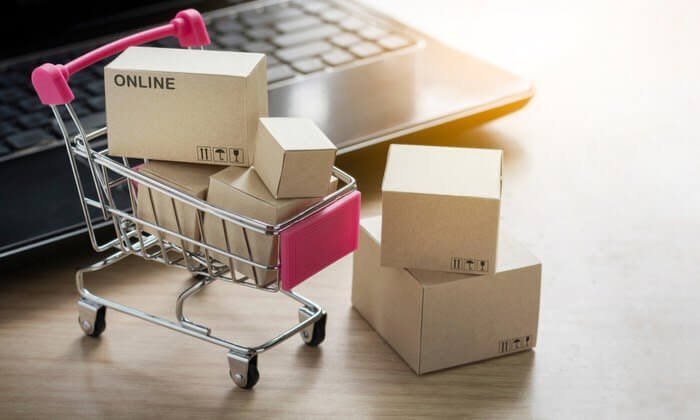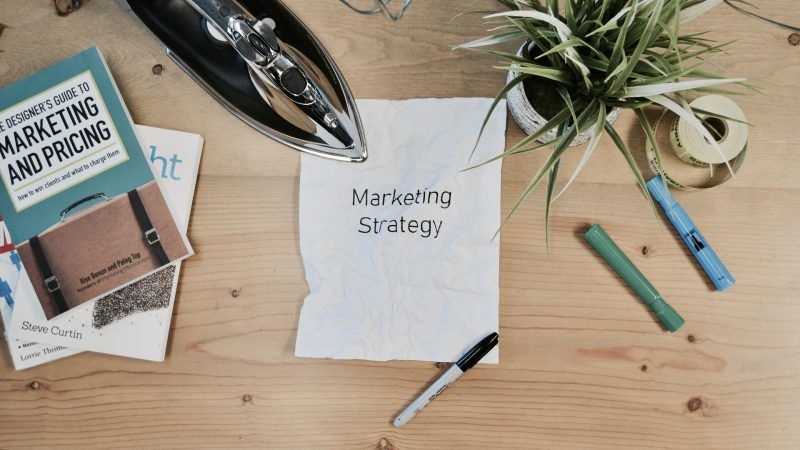How to Make Influencer Marketing Work for Your E-Commerce

It makes sense that e-commerces would want to try their hand at influencer marketing. People are shopping online a lot these days, and influencers are a great way to get your products in front of those potential consumers.
However, influencer marketing isn’t just about choosing the right influencer. There’s a lot more to a campaign than that, and if you want to be successful, you should know the major steps before diving into it.
Table of Contents
Thoroughly Prepare Before Doing Anything Else
Plan, plan, plan. Before you start looking for influencers or thinking about content ideas, you have to make sure you have a clear idea of what you want and how you plan to get it.
Define Your Campaign
Your campaign should have a clear objective. Maybe you want to increase sales of a specific product, or boost brand awareness. Perhaps you want more traffic to your e-commerce site, or subscriptions to a VIP program.
Whatever the goal, decide on some key performance indicators, or KPIs, to measure your progress. For example, if you want to increase sales, you could set up KPIs like sales made, revenue earned, and uses of influencer discount codes.
In addition to establishing your goals and strategy, you need to understand who your target audience is. Who is this campaign directed towards? Think about your buyer personas and their age, gender, location, language and interests. Later on, your target audience will directly impact influencer discovery.
Finally, think about practical details of your campaign, like:
- Timeline – Does the campaign revolve around a launch or other specific date?
- Budget – How much can you afford to spend on influencer discovery and incentive?
- Channel – Which social network is best for reaching your target audience?
- Size – How many influencers do you want to collaborate with?
- Analytics – Do you have an analytics platform up and running to track results?
Keep in mind that the type of influencers you work with are a function of your budget. However, if your budget for incentive is small, don’t worry. There are influencers who charge nominal fees or who will collaborate in exchange for free products, but more about that below.
Optimize Your Social Media Presence
As an e-commerce, your online presence is the face of your brand. Without brick-and-mortar locations, customers’ impressions of your company come directly from how they interact with you online. And social media plays a big role in this.
You don’t need to be active on every social network out there, but make sure that you are on the ones that your target audience use. Here’s a brief checklist to help you ensure that your social media profiles are up to par:
- Complete your profile with a description, any branded hashtags, and contact info
- Add a link to your e-commerce platform in your profile bio
- Set up a content calendar to promote regular posting
- Change your account to a professional/business account when possible
- On Instagram, set up Shopping
- Designate someone to monitor and respond to DMs and comments
Your social profiles are windows to your brand, so try to make them as appealing to users as possible.
Lastly, we always put a lot of emphasis on brands finding the right influencers by analyzing their profiles. But from the perspective of influencers, the same goes for brands. Influencers aren’t obliged to collaborate with you, and they’ll be less inclined when your social presence doesn’t make a good impression.
Analyze Influencers and Choose Those That Best Align With Your Brand’s Needs
Now that you have a roadmap of your campaign, you can begin your influencer search.
Where to Find Influencers
There are three main ways to find influencers:
- Directly on social media
- With an influencer marketing platform
- By hiring an agency
The first option is free, but the most labor-intensive. You have to search rather manually, finding profiles that fit the parameters of your campaign. You also can’t evaluate all metrics by looking at a profile and will have to ask influencers for their media kits or internal performance data.
Agencies are the most hands-off, as their teams will find and vet influencers for you, as well as handle all the follow-up afterwards. However, hiring an agency is expensive. Depending on the agency and the size of your campaign, you may pay hundreds or thousands of dollars per month.
Influencer marketing platforms are a middle ground. These search and analytics platforms require monthly or annual subscriptions, but their rates will be much lower than those of agencies. You still have to do the campaign legwork, but you can find and evaluate influencers more easily thanks to search filters and built-in analytics.
How to Analyze Influencers’ Profiles
There are some general metrics to check into to make sure that influencers have healthy profiles. Look at:
- Follower growth – how they’ve gained followers over time
- Engagement rate – the level of interaction they have with their followers
- Audience demographics and authenticity – analysis of their audience
- Past branded content – statistics about past collaborations
These metrics can reveal fraud, if you know where to look. Follower growth should be organic, which looks slow and steady when plotted out. If you see sudden spikes in growth, look closer into why. Sometimes influencers go viral or host a giveaway, both of which can cause quick, extreme growth. But in the absence of a logical explanation, spikes could show the influencer bought fake followers.
Engagement rates vary by social network and follower range, so only compare influencers to their peers. Beware extremely low and high engagement. The former shows a lack of interest or the presence of fake followers, and the latter shows bought likes, comments or other interactions.
Image source: https://www.heepsy.com/
Caption: An influencer marketing platform will automatically compare an influencer’s engagement rate to that of their peers and tell you if it looks suspiciously high.
Alt text: A screenshot showing an engagement rate that is suspiciously high when compared to that of the influencer’s peers.
Next, take a look at the audience. With respect to demographics, does the influencer’s audience match your target audience? As for authenticity, what portion of the audience looks like they could be bots?
Choose the Right Influencer for Your Brand
In addition to their metrics checking out, the influencers you select to work with should align with your brand. This means that the influencer logically fits with your brand.
This is important to make sure that you show followers an authentic collaboration. They shouldn’t think that the only connection between your brand and the influencer is the money you paid them to promote you. In order to succeed at influencer marketing, collaborations should feel natural.
In order to choose the right influencer for your specific brand, reflect on the following questions:
- Does my brand and products fit into the type of content this influencer creates?
- Is the influencer’s voice the right one to transmit my message?
- Do they uphold my brand’s values?
- Is their aesthetic style complementary to my brand’s?
Additionally, remember that you need to pay influencers for their work. If your budget is a concern, prioritize working with nano and micro influencers. These influencers have relatively small follower bases (up to 50K), but the highest engagement rates in the industry.
Followers see these influencers as authentic people, as opposed to celebrity-like, picture-perfect influencers with millions of followers. Nanos and megas are seen as experts in their niche, and can help connect your brand to their engaged, trusting followers.
Reach Out, Negotiate and Explain Any Guidelines
Once you have identified some influencers for your campaign, reach out to them. Keep your communications friendly and respectful. Tell the influencer a bit about your brand, the campaign, and why you think they’d be the right fit.
If you’re working with just a few influencers, you can send emails individually. But for big campaigns, consider automating your outreach. Just remember to personalize your templates so they don’t get looked over.
Negotiate with influencers with respect to how much and what type of content you want, and how much you can pay. Influencer incentive comes in various forms, like:
- Free products, services, or experiences – remember to include shipping in the budget!
- Flat fee – a one-time payment to the influencer for their service
- Cost per acquisition (CPA) – the influencer gets a flat or variable amount for each acquisition they bring in (you define the acquisition, but an example is sales)
In addition to working out payments, lay out any guidelines that you want the influencers to follow when posting. Are there any hashtags, brand mentions or links you want them to include?
This being said, give them creative freedom to create content. They best know how to communicate with their audience, so let them.
As an e-commerce, there’s one more thing you should do at this stage…
Set Up Influencer Discount Codes
These coupons allow followers to get a discount at your e-commerce when they enter a code they’ve seen on an influencer’s profile.
This strategy can help incentivize sales or boost brand awareness. Even when followers don’t convert into customers, the thrill of a discount can get them on your e-commerce browsing your products.
Further, discount codes can help you when it comes to paying influencers on a CPA basis. They make it easy to see who brought in which sale, and attribute the CPA to the correct influencer.
There are a few best practices for creating these codes:
- Make it easy to ID the influencer the code belongs to
- Keep codes short and simple
- Use block capitals to display the codes online

Caption: Mommy influencer @barbarabraga85 collaborated with meal delivery service Hello Fresh, which gave her an influencer code to share with followers. The code, BARBARABRAGA12, clearly belongs to her.
Alt text: An Instagram post from influencer @barbarabraga85 in which she collaborated with meal delivery service Hello Fresh and promoted a discount code followers can use at the brand.
You should be able to look at your analytics and easily know which code belongs to which influencer. Moreover, codes shouldn’t be too complicated; while most users will copy/paste them, you don’t want to encourage cart abandonment for those who cannot. Finally, block capitals make the codes stick out among other text and also help users understand individual characters more clearly.
Monitor Media and Gather Results
When influencers start posting, be ready to capture results! The more information you have, the better you can see the big picture of your campaign and its effect.
To collect published media, you have a few options:
- Ask influencers to notify you and/or send you the media alongside publishing it
- Have influencers mention your brand, which you should get notifications for
- Tell influencers to use branded hashtags that you can then track
- Manually check in on influencer profiles regularly (only for small campaigns)
- Use campaign monitoring software to automatically acquire media
However you decide to collect this media, save it somewhere you can revisit it later. In addition, depending on what you worked out with the influencer, you may want to republish their content. You could repost it to your own social media accounts, or maybe directly to your product pages to give a sense of social proof to hesitant shoppers.
As for your KPI-type results, look to your analytics platform to gather that information. You might not be able to see some results, like impressions. In that case, ask the influencer for the insights provided to them about their content from the social network.
Analyze Your Campaign and Measure its Success
At last the time has come to see if your campaign was worth it. Success is totally relative to your investment in the campaign, as well as the goals you set out for yourself at the beginning of it all.
For example, imagine you wanted to promote sales of a new dress on your e-commerce platform. You found 3 nano influencers and sent each of them a free dress. Although it retails for $100, the cost of goods sold for you, plus shipping, is $60, so your total investment in the influencers was $180.
You also gave the influencers discount codes, which allowed followers to get 20% off the dress. If customers were buying at $80 each, you’d need to sell at least 3 dresses (value of $240) to recover your investment of $180.
However, the influencers’ content inspires 6 people to buy the dress. You now have 6 sales which clock in at $480 (remember, discount codes applied). If your original investment in the influencers was $180, but you’ve made $480, you can see that your campaign was successful and left you something of a profit margin.
This is just one example of how to measure success. Depending on your campaign and its objective, the process may be a bit different for you. Remember to consider all types of benefits, like:
- Sales, revenue, profits
- Impressions, clicks, web traffic
- New followers on social media
- Content that you reused on your website or social accounts
- Anything else beneficial, like a photo shoot you can use in promotional materials

Caption: Fashion e-commerce ASOS regularly reposts content from influencers on its own account, like this photo from @heybriajones..
Alt text: An Instagram post from fashion e-commerce ASOS, which regularly reposts influencer content to its own account.
At the very end of the campaign, prepare a report about your results. Include your total investment, total output, as well as some examples of media that the influencers published. You may want to highlight media that performed particularly well, like the most-liked photos or most-viewed stories.
If you don’t quite meet the expectations you set out for yourself, don’t get discouraged. Analyze the data and see if you can draw any conclusions to help you do better next time. And if you see that some influencers performed really well, bookmark them for further collaborations in the future.
Conclusion
Influencer marketing campaigns have a lot of moving pieces, and being prepared is the best way to keep on top of them. Start your campaign with thorough planning, find influencers that can work toward your goals, and monitor the campaign’s content and results through to the end. Finally, if you’re left wanting to know more, check out this influencer marketing guide for e-commerces.






